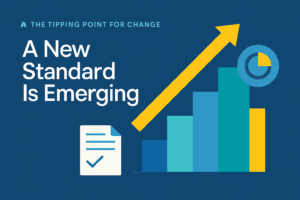
Why Start with Back-Office Automation?
These are often manually performed operations, relying on spreadsheets, PDF reports, email threads, and hand-checked formulas. As such, they are prone to delays, errors, and miscommunication between borrowers and lenders. Automating the back office, therefore, delivers immediate value by transforming these tasks into consistent, scalable, and auditable workflows. Back-office automation is key to achieving these improvements.
The back office is where the majority of ABL inefficiencies occur. Legacy processes involve spreadsheets, email chains, and redundant data entry—causing delays, inaccuracies, and bottlenecks. Automating these back office tasks with automation provides immediate ROI and lays the foundation for broader digital adoption. It also ensures consistency in how borrowing base calculations are performed and reviewed, making back-office automation critical.
What Gets Automated?
-
- Data imports begin with simple file uploads and intuitive data mapping tools. These tools make it easy for borrowers to get started. As borrowers and lenders grow more comfortable, these processes can evolve into direct integrations. This evolution can include direct connection to ERP or accounting systems, enabling real-time data flow and continuous processing without manual intervention.
-
- Ineligibles processing using an intuitive interface and flexible rule logic that simplifies compliance with complex loan agreements. Using such a system supports a wide range of collateral types, including accounts receivable, inventory, and fixed assets.
-
- Borrowing base results build on the ineligibles’ processing. They also incorporate the additional business terms established in the loan agreement. As a result, this helps reduce funding delays and improve the accuracy of availability decisions.
-
- Result reconciliation and approval workflows serve as the final review step in a streamlined, automated process. This step fosters collaboration between lender and borrower. As a result it provides a clear, shared view of the calculations, ensuring both parties are aligned before finalizing availability across borrower-lender lines.
Immediate Impacts of Back Office Automation
-
- Dramatically improved data accuracy and transparency
-
- Centralized documentation and calculation history
-
- Quicker funding turnaround due to faster review cycles
-
- Reduced analyst hours and overhead costs
-
- Ability to handle higher transaction volumes with the same staff
Future Benefits
-
- Integration with CRM and Document Management Platforms
Centralized connectivity ensures all borrower-related data—such as contracts, correspondence, and credit memos—are unified and easily retrievable. Consequently, this reduces administrative silos and enhances collaboration between teams.
- Integration with CRM and Document Management Platforms
-
- Stronger Audit Trails and Compliance Infrastructure
Automation introduces consistent logging and documentation, strengthening internal controls and simplifying auditor reviews.
- Stronger Audit Trails and Compliance Infrastructure
-
- Centralized Borrower Database for Enhanced Risk Assessment
With all borrower financials, performance history, collateral records, and covenant tracking consolidated in one system, lenders gain a comprehensive view of borrower behavior and trends. As a result, this centralization allows for:
-
- Better Borrower-Level Risk Analysis: Analysts can quickly identify deteriorating conditions, credit risks, or anomalous patterns without toggling between disparate systems or data sources.
-
- Portfolio-Level Risk Modeling: Aggregated borrower data supports macro-level insights. Additionally, lenders can assess exposure concentrations, monitor systemic risk, and simulate various stress scenarios across the portfolio.
-
- Proactive Decision-Making: Equipped with structured, longitudinal borrower data, credit teams can move from reactive to predictive strategies. As a result, they can adjust advance rates, collateral requirements, or covenants based on risk indicators.
-
- Centralized Borrower Database for Enhanced Risk Assessment
Conclusion
Automating the ABL back office isn’t just a technology upgrade—it is a strategic imperative. Above all, lenders looking to eliminate inefficiencies, reduce errors, and accelerate growth will find back-office automation crucial. It plays a key role in laying the foundation with scalable, automated workflows. Furthermore, it enables institutions to unlock the full potential of digital transformation across the lending lifecycle.
The benefits are clear: higher accuracy, faster approvals, improved collaboration, and a stronger competitive position in the market. Above all, lenders that modernize now will be best positioned to meet rising borrower expectations and regulatory demands.
Ready to transform your back office into a catalyst for growth through automation?
Connect with the team at LoanWatch to explore how we can help streamline your ABL operations. We aim to eliminate manual bottlenecks, and set the stage for smarter, faster, and more secure lending.


